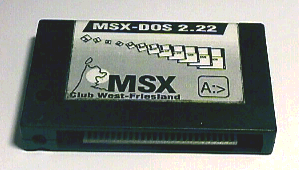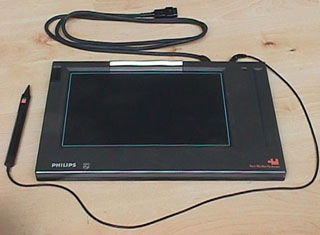
Last Updated:

Note: Most images are resized.
To view them full-size drag them to your browser's address-bar.
For more images (of disks for example) click here.



 I bought this
little beauty on the left at the Bussum fair
1999 (version 4.00). The next version (version 4.01) is put in a larger
box, and can be bought in combination with an RS232 in the same
cartridge (see below for a single Sunrise RS232). It's as well the
cheapest as the fastest interface available!
I bought this
little beauty on the left at the Bussum fair
1999 (version 4.00). The next version (version 4.01) is put in a larger
box, and can be bought in combination with an RS232 in the same
cartridge (see below for a single Sunrise RS232). It's as well the
cheapest as the fastest interface available!
 The cartridges on the left are the following:
The cartridges on the left are the following:
 At the right you see a Toshiba Music-Module. This is one of the popular
series, the market however was lead by Philips. This because their
Music-Module had 32k SampleRAM mounted in it and it had a mic-in.
However, I have built-in some SampleRAM in mine too so now mine is
almost equal to the one of Philips.
At the right you see a Toshiba Music-Module. This is one of the popular
series, the market however was lead by Philips. This because their
Music-Module had 32k SampleRAM mounted in it and it had a mic-in.
However, I have built-in some SampleRAM in mine too so now mine is
almost equal to the one of Philips.
 At the left you an see the latest-of-the-latest for MSX, the
MoonSound (well, the design is actually from 1994). It indeed sounds
like a moon, it's really an awesome cartridge. 18 channels FM
(equals the OPL3 part of the SoundBlaster Pro) and 24 channels Wave.
Finally we can play decent
samples and MODs on a normal MSX. Bit expensive (about 170 Euro), but
the output is much better compared to, the SoundBlaster 16 on the PC,
which produces a lot of noise.
At the left you an see the latest-of-the-latest for MSX, the
MoonSound (well, the design is actually from 1994). It indeed sounds
like a moon, it's really an awesome cartridge. 18 channels FM
(equals the OPL3 part of the SoundBlaster Pro) and 24 channels Wave.
Finally we can play decent
samples and MODs on a normal MSX. Bit expensive (about 170 Euro), but
the output is much better compared to, the SoundBlaster 16 on the PC,
which produces a lot of noise.

 At the left you see the RS232 which can be plugged in the (old)
MT-telcom modem (where I forgot to take a photo of).
At the left you see the RS232 which can be plugged in the (old)
MT-telcom modem (where I forgot to take a photo of). Bought this cool interface at the MSX Fair
2000 in Oss. It's an RS232-only, but it can also be bought on
combination with an IDE-interface (version 4.01) or as a single
IDE-interface without RS232. It hasn't got an RS-BIOS, so it doesn't
work with most terminal-software, but it does work with Erix and my
terminal program downloadable from this page. Why buy this one? Because
it's cheap, and although it lacks the RS-BIOS (I think it is possible
to put one in the IDE's FlashROM btw) it's got a really good UART
(a 16550, the same most PC's have), with large FIFO buffers and
hardware flow control.
Bought this cool interface at the MSX Fair
2000 in Oss. It's an RS232-only, but it can also be bought on
combination with an IDE-interface (version 4.01) or as a single
IDE-interface without RS232. It hasn't got an RS-BIOS, so it doesn't
work with most terminal-software, but it does work with Erix and my
terminal program downloadable from this page. Why buy this one? Because
it's cheap, and although it lacks the RS-BIOS (I think it is possible
to put one in the IDE's FlashROM btw) it's got a really good UART
(a 16550, the same most PC's have), with large FIFO buffers and
hardware flow control.
 A philips NMS 1150/00 touchpad. Two buttons, one on the pad and one on
the pen (both 1st firebutton). Can be used with for example Philips
Designer Plus and from Basic using the PAD function.
A philips NMS 1150/00 touchpad. Two buttons, one on the pad and one on
the pen (both 1st firebutton). Can be used with for example Philips
Designer Plus and from Basic using the PAD function.
 This is a Philips NMS 1170/20 barcode reader. Move the pen over a
barcode and the number is returned. The dedicated software doesn't
recognize a lot of barcode-types, but there is some third-party
software which recognizes more. However, it still doesn't recognize
most of them (better software needed!). You can also print barcodes and
use it for your own administration. That's the real 'practical' use of
this thing.
This is a Philips NMS 1170/20 barcode reader. Move the pen over a
barcode and the number is returned. The dedicated software doesn't
recognize a lot of barcode-types, but there is some third-party
software which recognizes more. However, it still doesn't recognize
most of them (better software needed!). You can also print barcodes and
use it for your own administration. That's the real 'practical' use of
this thing.
 The cartridges at the left are the following:
The cartridges at the left are the following:


These are the cartridges
on the right:
- Yess!!! Now I know the name of this cartridge, thanks to Albert
Beevendorp... It's Fire Ball (a direct translation!!!).
- Darwin 4078. This game was called shit by a lot of people but I must
confess I still liked it. But then I had never played Aleste... :)
- Arkanoid 2, revenge of Doh... Do I have to say more? Everybody knows Arkanoid.

- Traffic, a simple 16k game of Sony. Still it's a fun game...
- Eddy II, a drawing-program for the MSX1
- Ah... LOGO... I tried to learn this language a few times but it
didn't work out. I already learned Basic and it just had too little
possibilities, and it was MSX1-only... By the way, a friend of mine
can program in SuperLOGO on the PC.